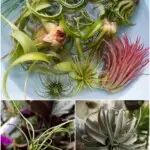
Have you ever seen beautiful displays of air plants and wondered how hard they are to grow, or how they even grow? And what is are they, anyway?
We’re covering it all here, from how to care for these incredible plants, to how to artfully display them in your home.
What is an air plant?
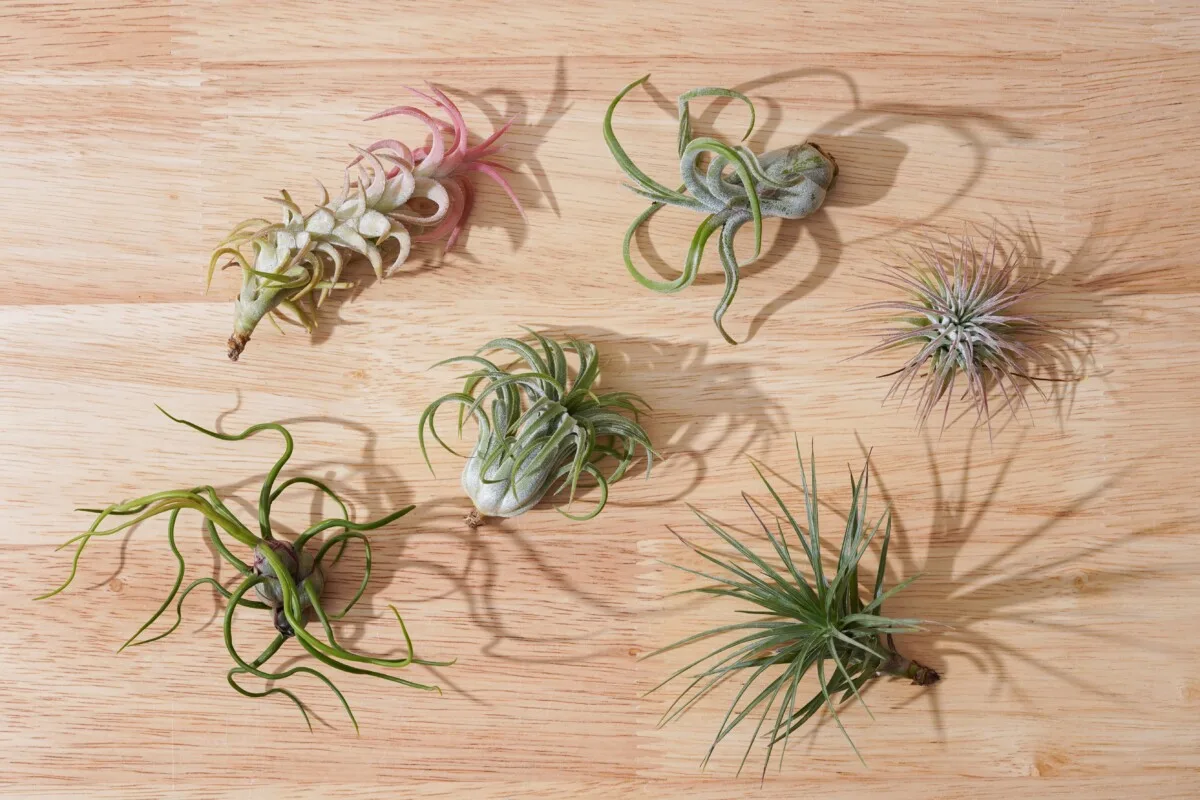
Air plants, also known as Tillandsia, are part of the bromeliad family, which also includes pineapples and Spanish moss. Tillandsia, in particular, are epiphytic, which means they don’t grow in soil, but rather grow rooted to a host. I’ll bet you have an epiphyte in your home, and you don’t even know it.
Unlike most plants that grow in soil on the ground, air plants attach themselves to other plants, usually trees, and grow without soil, ‘in the air.’
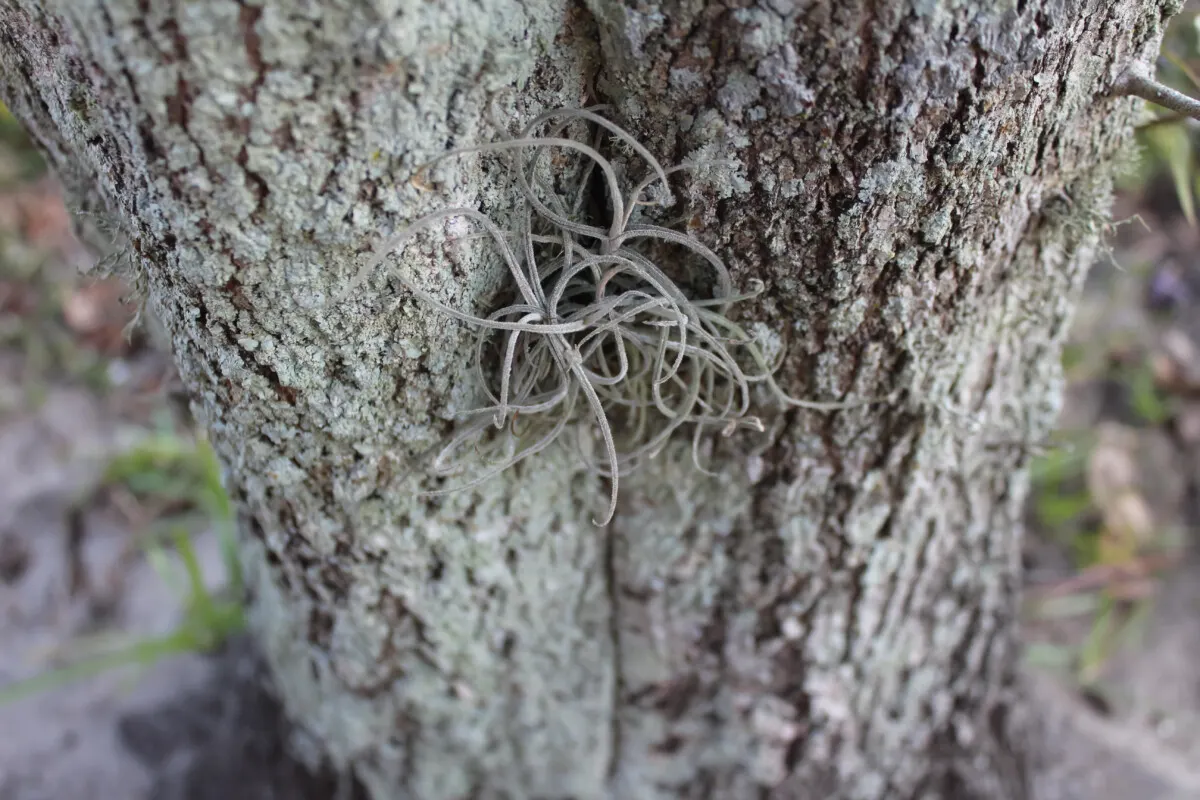
Even though tillandsia don’t need soil, they still need care.
One of the biggest reasons they die in the care of people is because they’re left on their own and ignored. Tillandsia aren’t difficult to care for, but they do take some understanding and effort to keep them alive and thriving.
So, without further ado, let’s go over the ten things you need to know about air plants before attempting to grow them.
10 Things to Know Before Growing Air Plants
1. How long do air plants live?
Air plants tend to live between two and five years if they’re cared for properly. The life cycle of a tillandsia depends entirely on its species and whether or not it’s getting the light, water, and nutrients it needs to thrive.
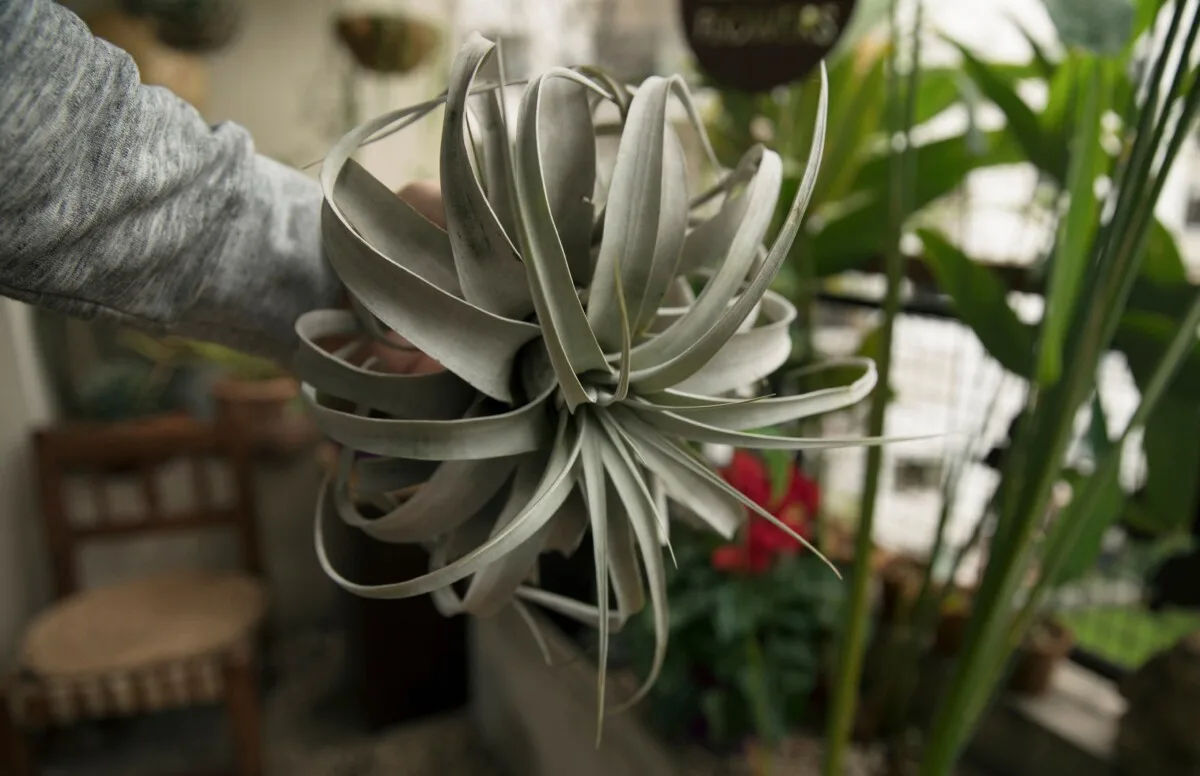
Though air plants don’t live very long lives, they do propagate very easily, so as long as you take good care of your plants and learn how to harvest pups, you will always have access to more.
2. You can propagate tillandsia pretty easily
Air plants propagate by growing pups, little baby plants that start off as tiny nodes at the bottom of the plant. These pups appear right before bloom time and are clones of the parent plant.
You may be tempted to pull them off right away, but pups are very fragile, so let them grow to at least a third of the size of the mother plant before you remove them from the mother plant. In fact, you don’t need to remove them at all; you can leave them attached to the mother, where they’ll continue to grow until she dies.
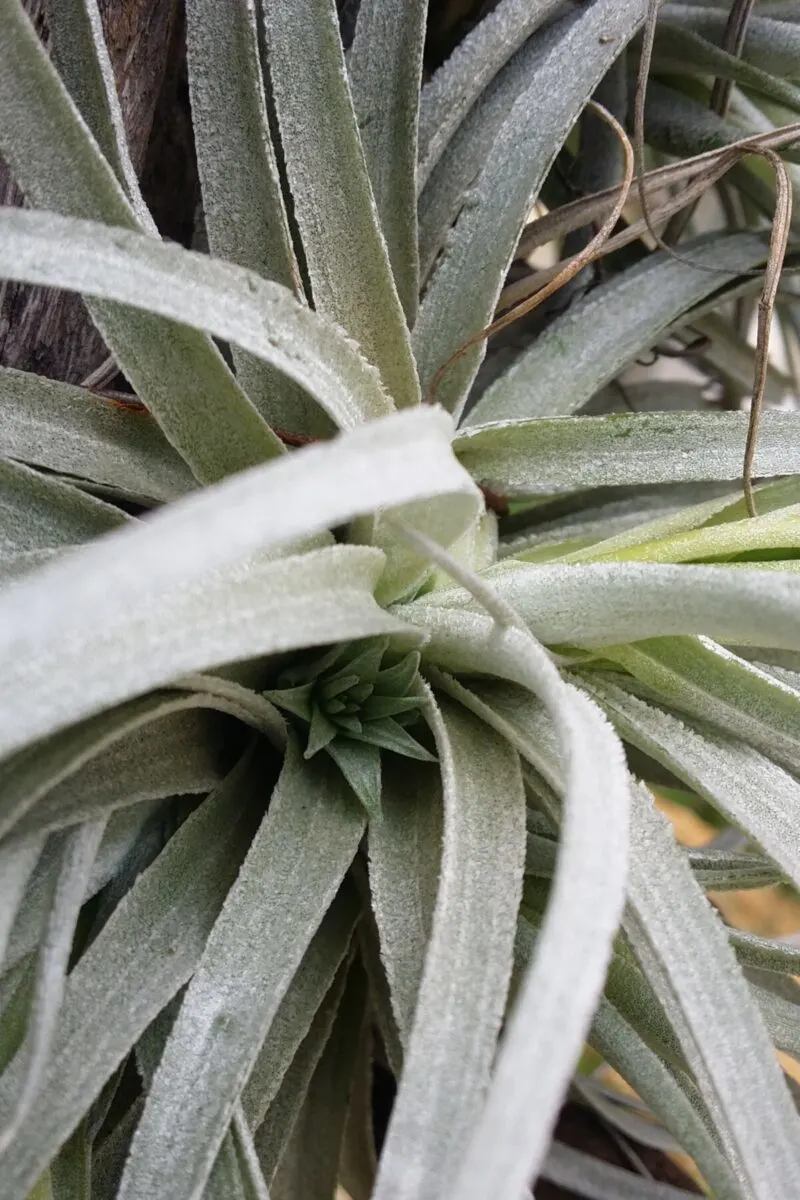
If you do choose to harvest the pups, you’ll do so once they’re big enough to be separated from the parent plant. Simply use a sharp, clean knife to cut them from the main plant. Pups can then be displayed and cared for exactly the same as any other tillandsia.
Once you get comfortable propagating your air plants, you can rest assured that you’ll never be without these beauties in your home.
3. How difficult are they to grow
Air plants are pretty easy to grow, but they can’t be ignored, and that’s one of the biggest mistakes tillandsia owners make.
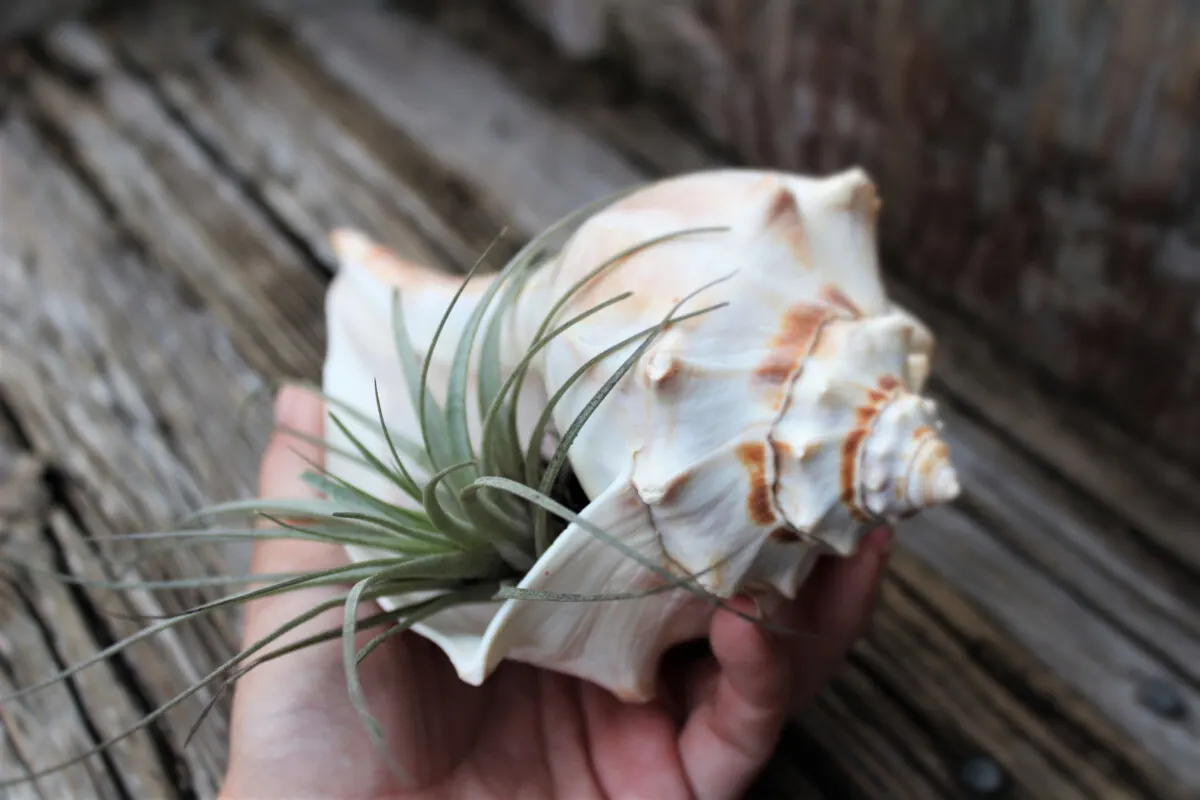
While they don’t need soil to survive, just like all other plants, they still need sunlight, water, protection, and nutrients.
Air plants are certainly more high maintenance than your average houseplant, but they’re a lot more interesting, too!
4. Air plants do indeed need more than air to thrive
Air plants have a very deceiving name. Most people fail at keeping them alive because they don’t understand that tillandsia don’t just need air to survive. Their name only implies that they can survive without soil, but they still need the same things other plants do in order to survive.
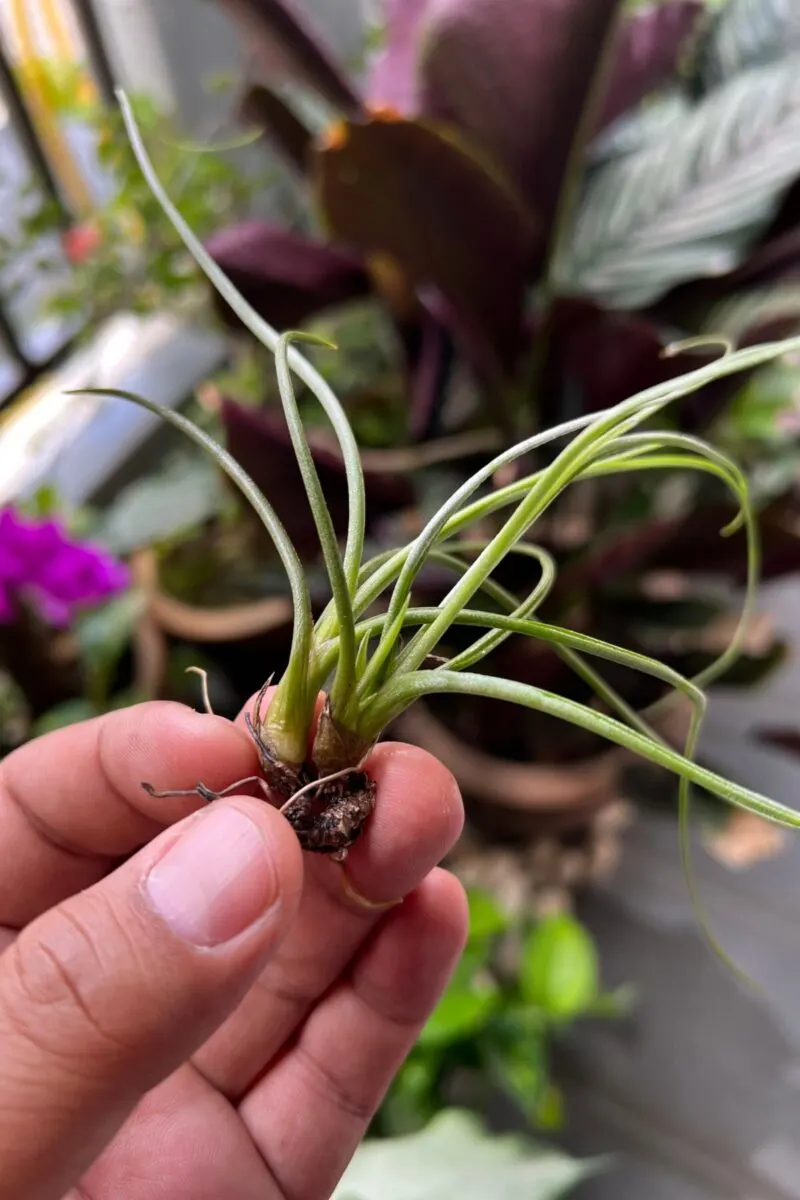
In nature, air plants tend to grow in the crooks of trees and on branches in very humid areas that get a lot of rain. They can easily get all the water they need from the environment and don’t need care from people.
Tillandsia in your home, however, very much need you to care for them.
To keep air plants happy, you’ll need to mimic their natural environment to the best of your ability. That means giving them plenty of indirect sunlight and keeping them moist.
Air plants have tiny silver scales that are essential to their survival. The scales absorb water and nutrients from their environment. These scales are fragile and can be easily harmed, so try not to handle your tillandsia unless you need to.
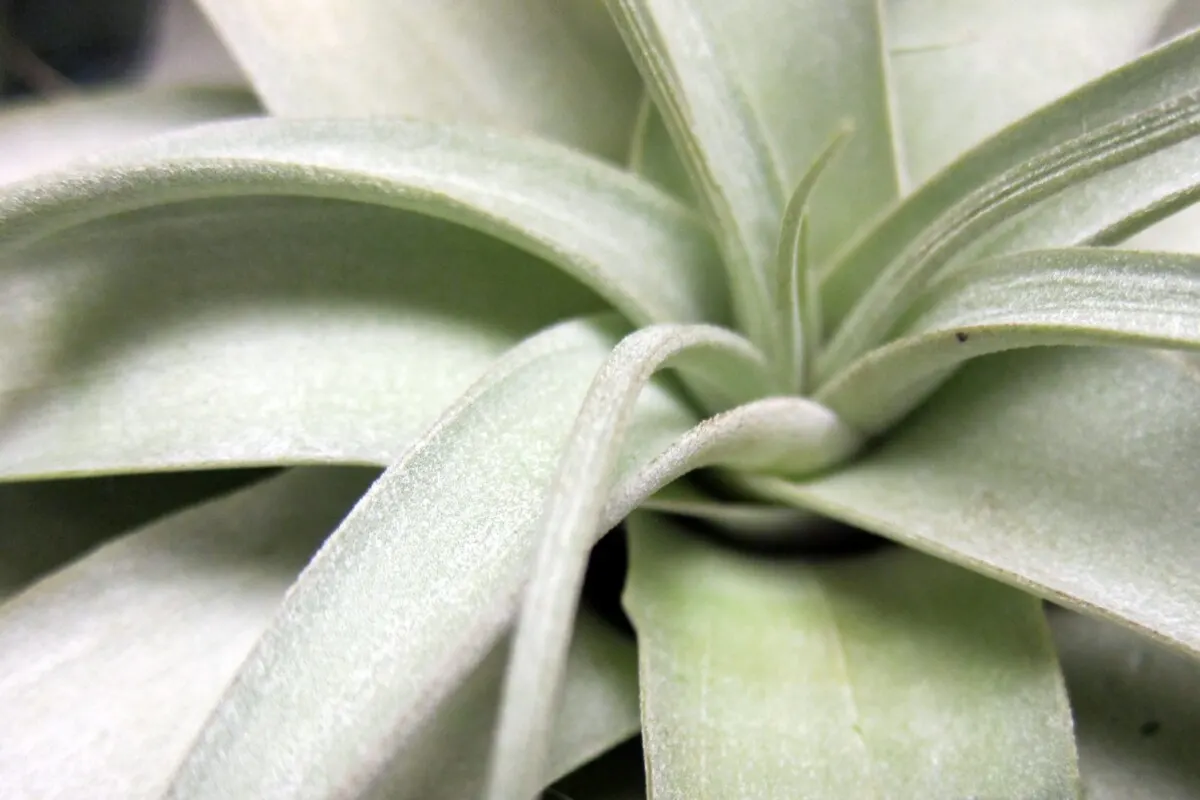
5. How do you water air plants?
There are several ways to make sure your tillandsia is getting adequate water.
Keep them in a humid location
Keeping your air plant in the bathroom is a great way to make sure it’s happy. The water vapor from showers and baths will keep it hydrated. You may still need to water your tillandsia on occasion, but keeping the plant in a humid environment will cut down drastically on the care it requires from you.
Mist your air plants with water
Misting your air plants with water from a spray bottle is one of the most common ways to water air plants. If you choose this option, you’ll need to mist your tillandsia once every few days, or even more frequently in dry climates.
When you mist your plants, make sure to spray them until they’re dripping wet.
Soak your tillandsia in water
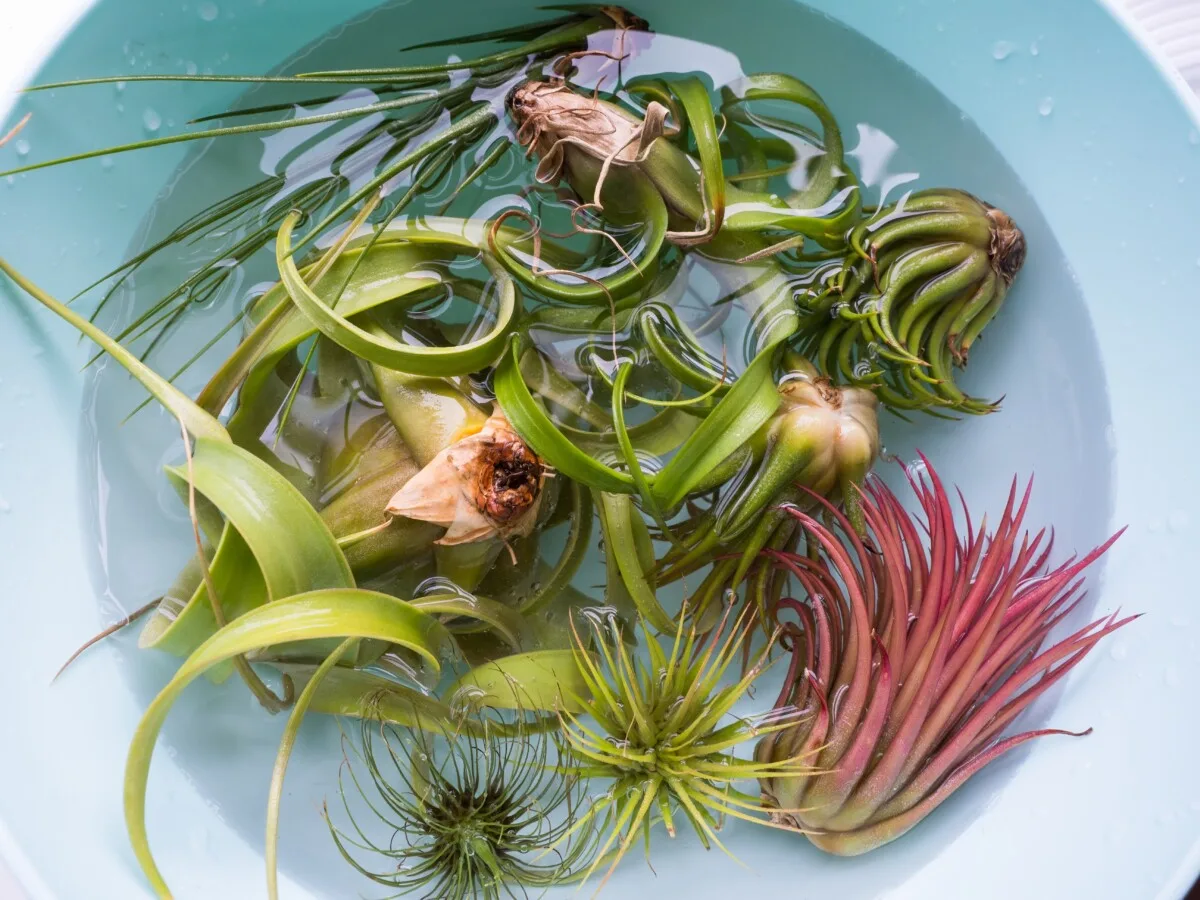
This is the way that we water our air plants, and it works great and requires very little effort from us. If you’re busy and don’t have time every day to mist those little babies, this is a great option.
To water by soaking, simply take the whole plant and submerge it in a bowl of water. The water should be filtered and de-chlorinated before watering so as not to damage your plant. You can easily de-chlorinate tap water by letting the bowl of water sit out for a day before watering your plants.
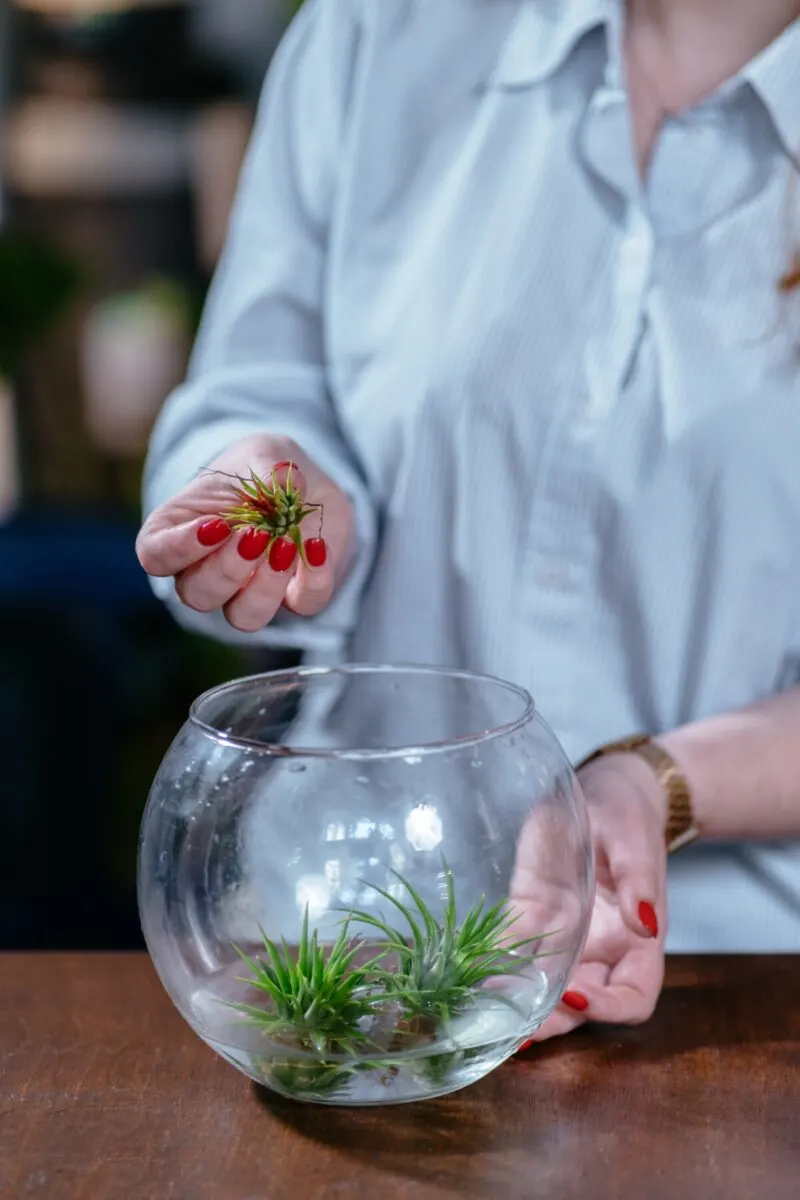
Leave it in the water for 15 minutes so it absorbs as much water as possible, then gently shake off the excess water and let it dry completely before you put it back on display. Do this once every 1-2 weeks, depending on how humid or dry your climate is.
6. How much sunlight do air plants need?
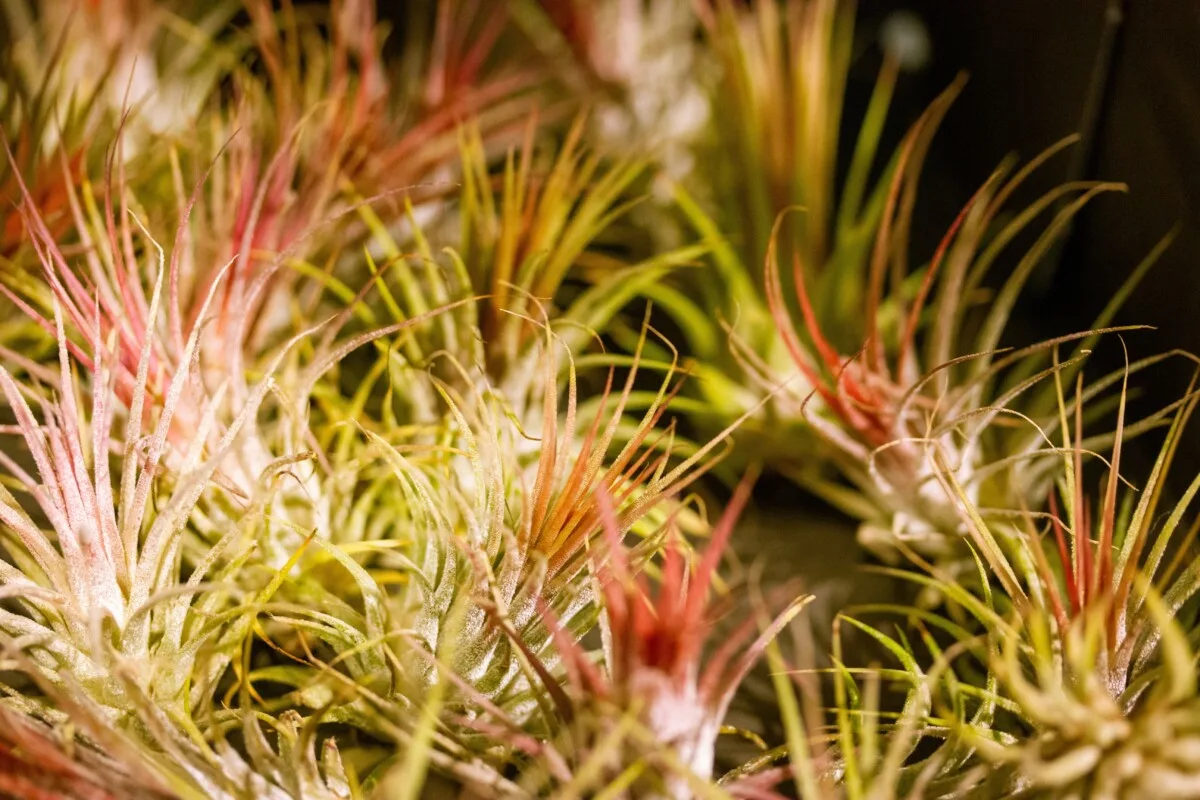
Air plants have very specific sunlight needs. They thrive when they are receiving bright indirect sunlight or filtered sunlight for most of the day. They have high light needs, but too much of a good thing can also harm them.
Tillandsia are fragile and will dry out easily if they receive direct sunlight for most of the day.
7. Air plants bloom only once in their lives, but it’s spectacular!
Unlike many other plants, air plants have a short lifespan and only produce flowers once in their whole lives.
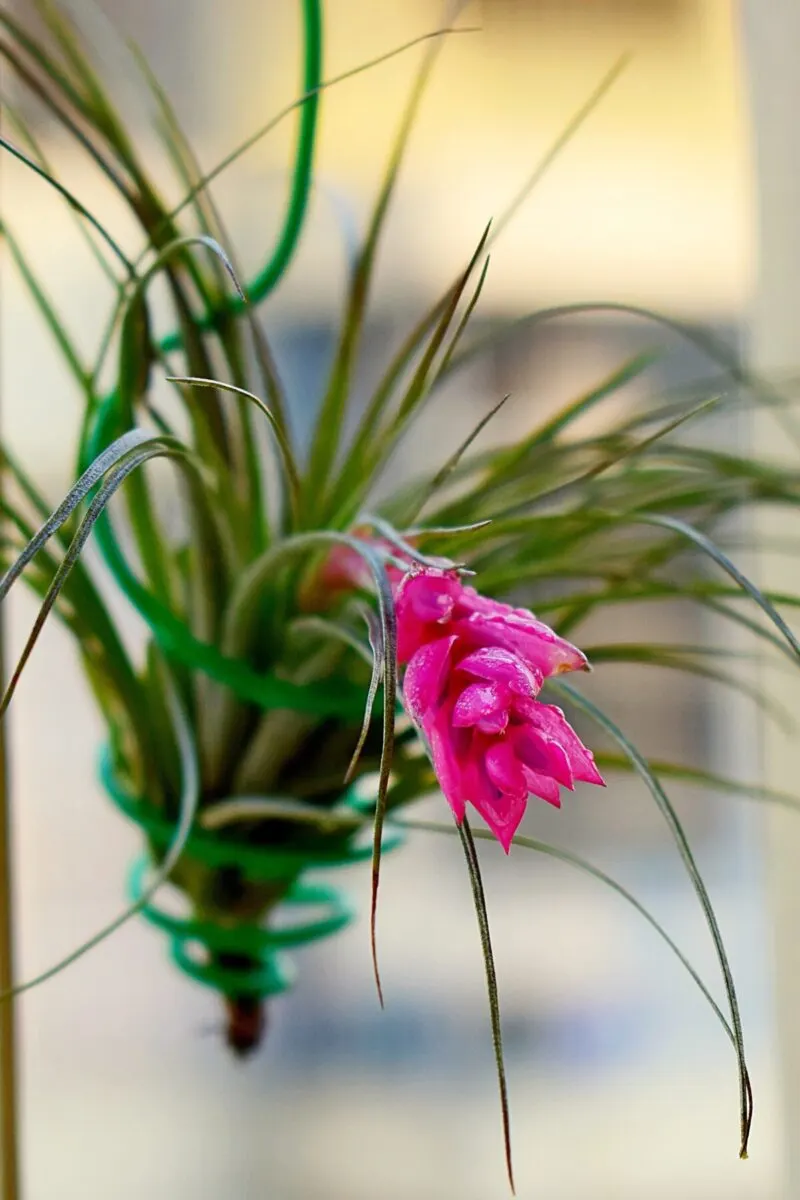
Air plant flowers are absolutely gorgeous, in shades of bright tropical pink, yellow, and purple. Each species will produce different flowers.
Blooming can last anywhere from a few days to a few weeks, depending on the species.
When tillandsia bloom, they need a little extra water so they can make pups, but water carefully so as not to get the flowers wet or they’ll wilt.
8. Where do you buy air plants?
Tillandsia have become very popular, and because of that, they are available practically everywhere. The best place to buy them is at a plant nursery; that’s where you’ll get the highest quality stock.
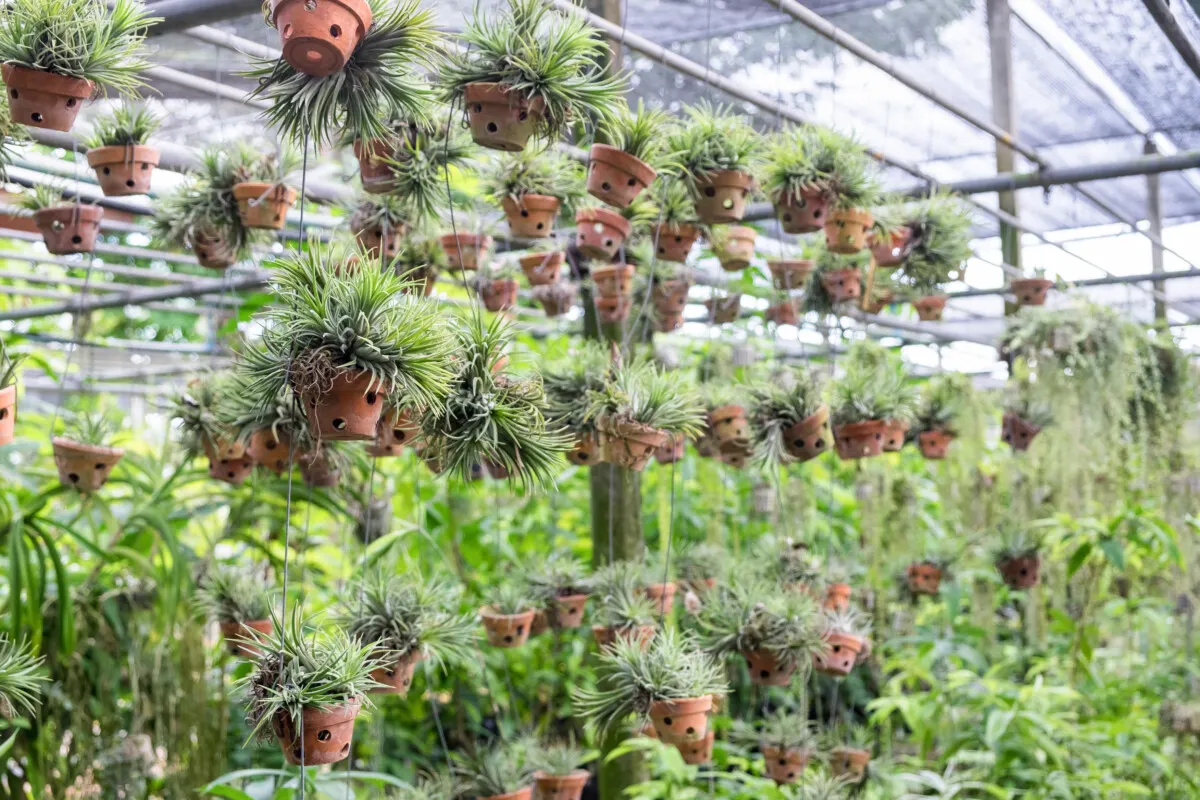
You can also pick up air plants at home improvement stores like Home Depot, Lowes, and even some grocery stores.
If you’re looking for unique or special types of tillandsia, you may have some luck shopping for them online. Because they don’t grow in soil, air plants are very easy to ship, but they can still suffer damage from improper packing, so make sure you buy from a reputable online store. Etsy is one place with a large variety of tillandsia for sale.
9. You can grow tillandsia both indoors and outdoors, as long as your weather is appropriate
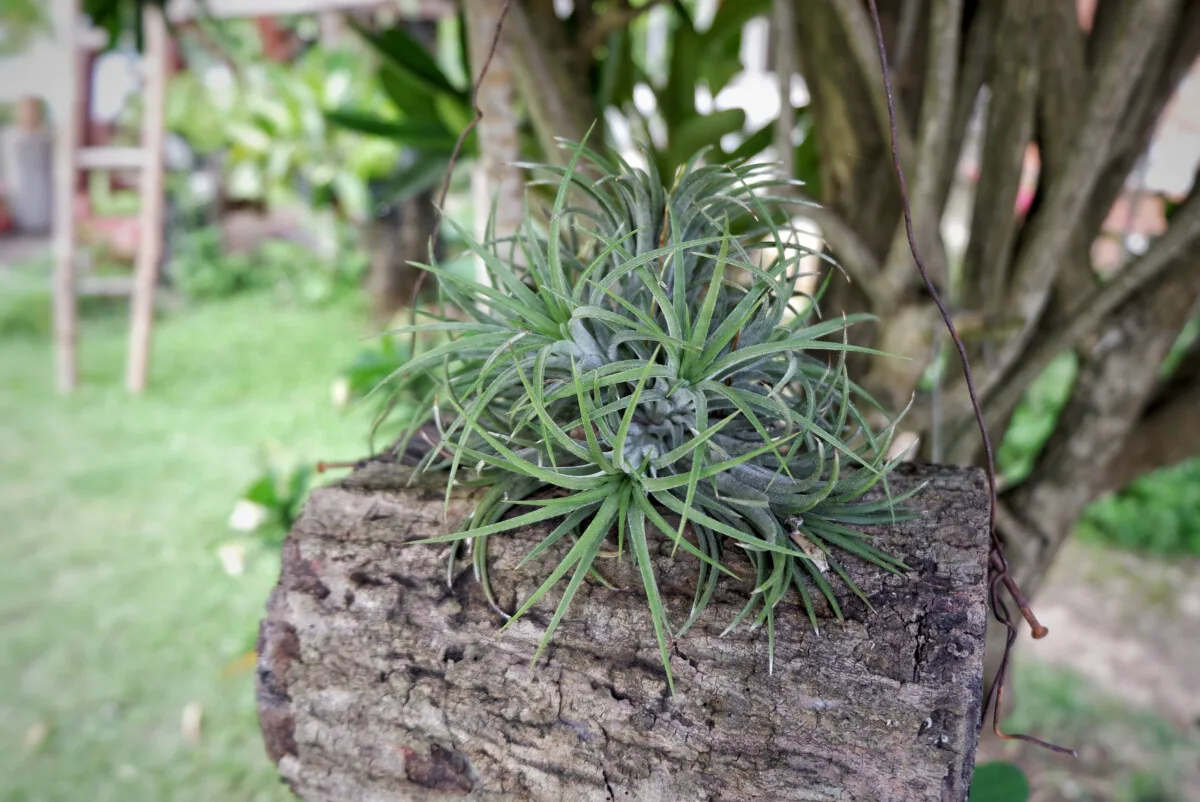
Air plants grow fabulously outdoors if you live in a warm climate. Zones 10-12 are ideal for outdoor air plant growing, but if you live in a cooler climate, you can always keep your tillandsia outdoors most of the year and bring them inside when the temps drop below 40.
If you plan to grow air plants indoors, be sure to set them near a south or east-facing window so they can receive bright but indirect sunlight.
10. No need for soil means lots of fun ways to display them
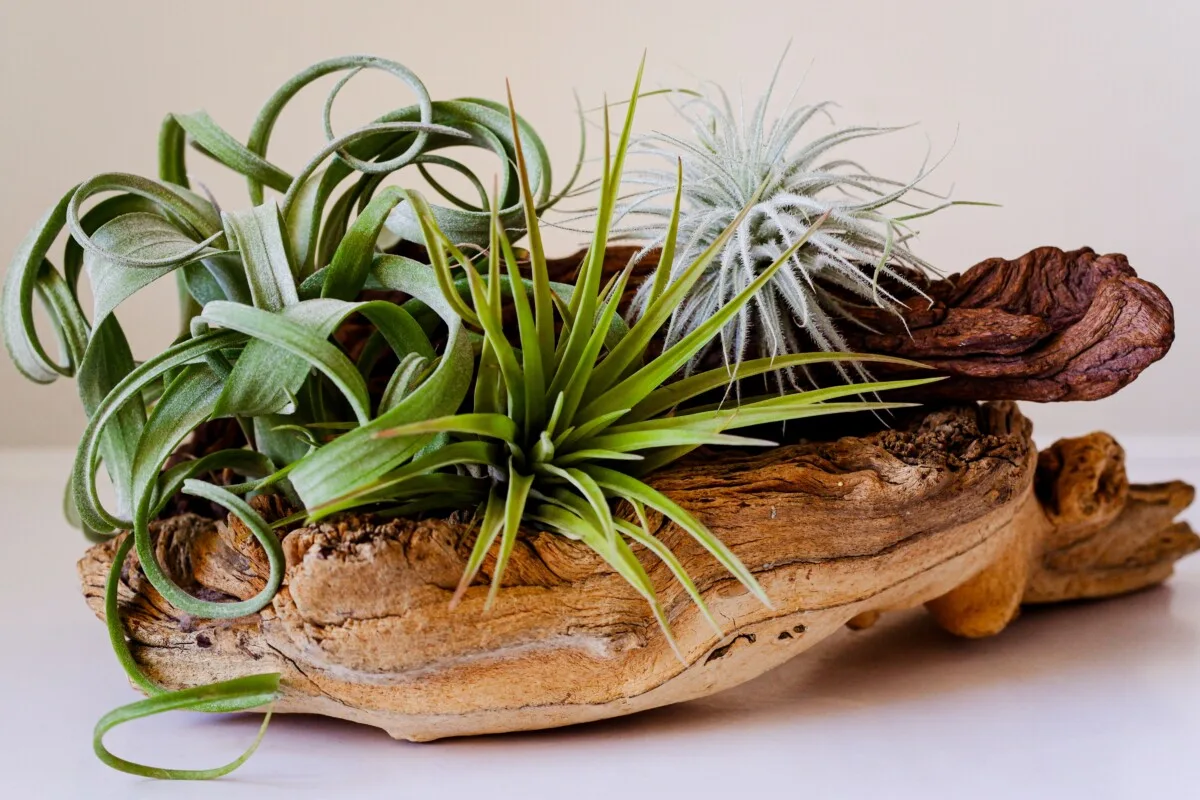
The opportunities are endless with tillandsia because they don’t have soil and pots weighing them down. There are dozens of creative ways to display these cute plants, from displaying them on magnets on your refrigerator to setting them on a piece of driftwood to including them in a fancy terrarium. The opportunities are only as limited as your imagination.
The only thing you need to remember when displaying your tillandsia is that they need proper light and water to really thrive. The rest is up to you!
Are you ready to dive into the world of air plants? How would you like to grow aloe as an air plant? We have a whole article on doing just that!

Get the famous Rural Sprout newsletter delivered to your inbox.
Including Sunday musings from our editor, Tracey, as well as “What’s Up Wednesday” our roundup of what’s in season and new article updates and alerts.


